The species of Genlisea and terrestrial Utricularia typically found in cultivation are from tropical and subtropical locations in South America and Africa plus some Utricularia species are from Australia. These species are very easy to grow and many can become weeds in carnivorous plant collections.
Genlisea and terrestrial Utricularia are generally grown for their flowers. Both genera have below ground traps which are constructed from the true leaves. They trap small organisms that live in soil. What you see above ground are petiolate adventitious leaves. You should consider growing these plants in such a way that will allow you to observe the traps.
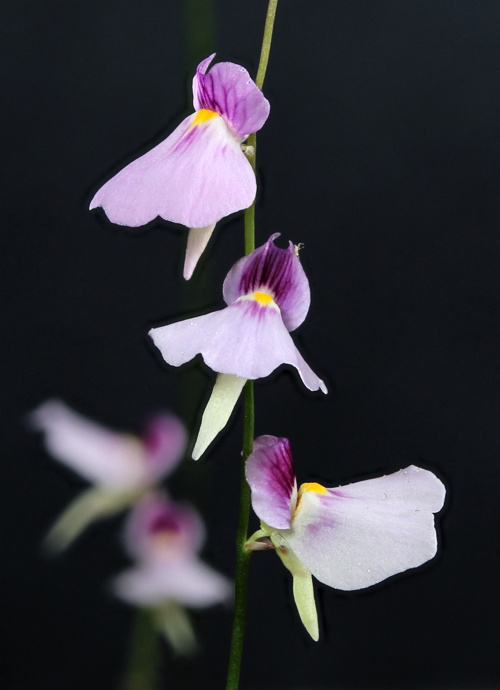
Utricularia blanchetii. The lower petals are about 10 mm wide. This species does not self-pollinate.
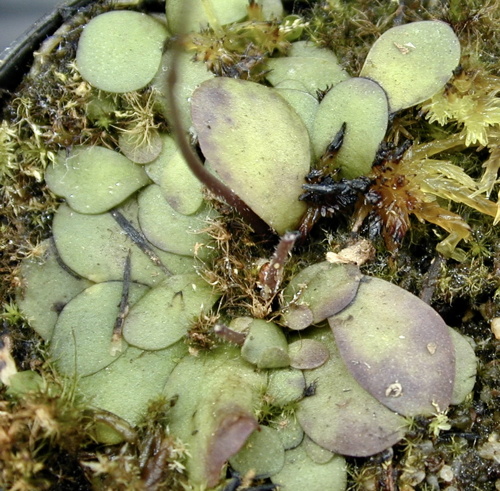
Genlisea hispidula above-ground part of plant showing adventitious petiolate leaves.
Terrestrial Utricularia usually aren't very picky about soil. In fact they tend to prefer to live in the pots next to where you plant them. In the wild, species can be found in pure sand, peaty sand, laterite soils, and guk. Genlisea tends to stay put where you plant it. Water levels are usually near or even a little above the soil surface. In captivity, both genera grow well in pure sphagnum moss as well as the standard 1:1 peat:sand "CP mix". They can be grown in pots sitting in a small amount of water like Drosera but can also be grown in containers without drainage. Like other carnivorous plants, they do require pure water and can be killed by too much fertilizer in the soil.
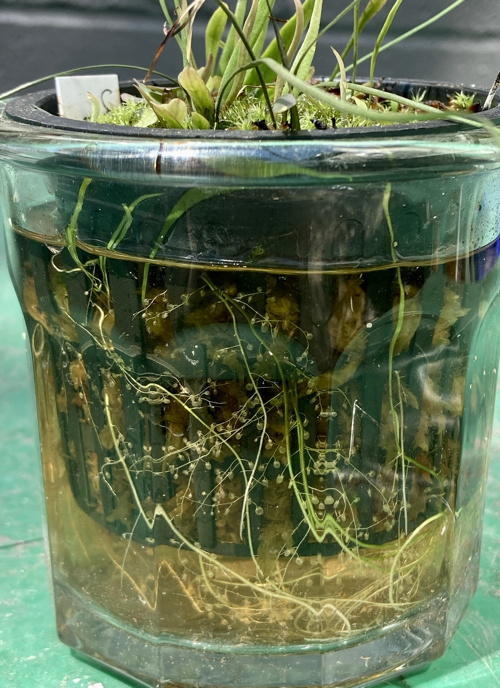
Utricularia praelonga growing in a net pot suspended in a glass of water.
Genlisea and Utricularia can be grown in net pots suspended in a container containing water. Please see the CPN article "Grow Genlisea so you can see the traps" (PDF) for more information.
Some species are annuals or short-lived perennials. You want to be collecting any seed produced to make sure you have the plants long term. Even the perennial Utricularia can be short-lived if they are ignored. Utricularia constantly like to be invading new soil. A common technique is to remove half of the soil and plants from a pot and replace it with fresh soil. This gives you two pots with the plants. If you want hundreds of pots with Utricularia plants they can be easily propagated from stem cuttings.
Sow seeds of Genlisea and Utricularia on the surface of your medium of choice. The medium should be wet to very wet. I put pots with seeds in plastic zip-lock bags with water a few cm deep. The bags should go under florescent lights but be careful not to have them too close or you could cook the seedlings. After the seeds germinate, I remove the pots from the plastic bags and put the pot in a terrarium. The seedlings may be a little slow growing at first. Have patience.
-- John Brittnacher
January 2002
Last update February 2024
For more information please see:
Hanrahan, Bob (1979) There's no Trick to Growing Utrics. Part 1: Terrestrial Species. Carniv. Pl. Newslett. 8(2):47-50 ( PDF )
Claudi-Magnussen, Glenn (1982) An Introduction to Genlisea. Carniv. Pl. Newslett. 11(1):13-15 ( PDF )
Meyers-Rice, Barry (1992) Focusing on U. calycifida -- a variable species. Carniv. Pl. Newslett. 21(1-2):9-13 ( PDF )
Rutishauser, Rolf and Jeannette Brugger and Lorenz Butschi (1992) Structural and developmental diversity of Utricularia traps. Carniv. Pl. Newslett. 21(3):68-74 ( PDF )
Studnicka, Miloslav (1996) Several ecophysiological observations in Genlisea. Carniv. Pl. Newslett. 25(1):15-16 ( PDF )
Rivadavia, Fernando (2002) Genlisea lobata Fromm-Trinta. Carniv. Pl. Newslett. 31(4):116-118 ( PDF )
Studnicka, Miloslav (2003) Genlisea Traps--A new piece of knowledge. Carniv. Pl. Newslett. 32(2):36-39 ( PDF )
John Brittnacher (2022) Grow Genlisea so you can see the traps. Carniv. Pl. Newslett. 51(3):143-146. ( PDF )
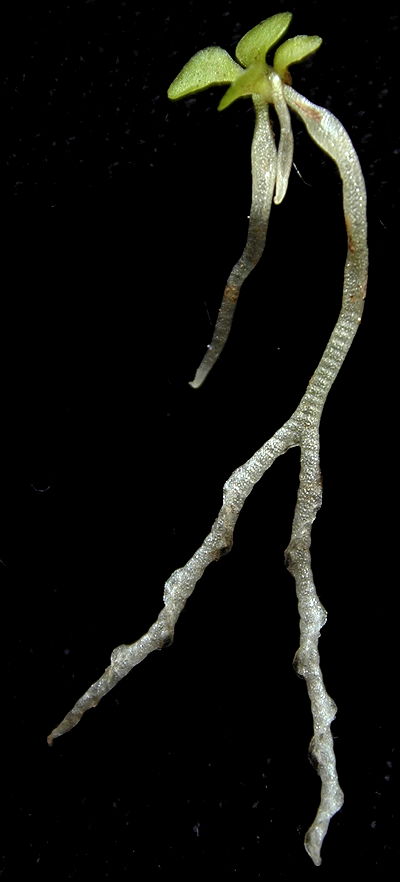
Genlisea violacea seedling showing underground trap constructed from a "Y" shaped leaf. Genlisea has no roots. The green structures are expanded stems.

Utricularia livida flowers.
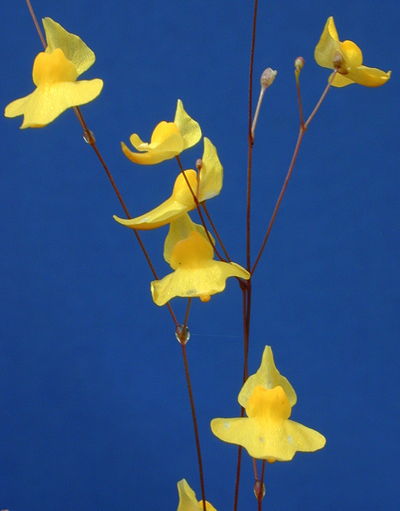
Utricularia subulata flowers. Notice the sticky dew drops in the crotches of the flower stalks.
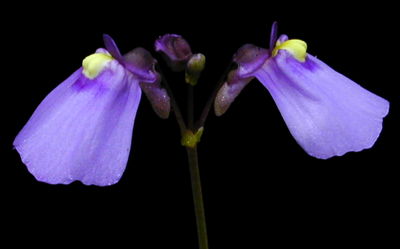
The flowers of Utricularia dichotoma.
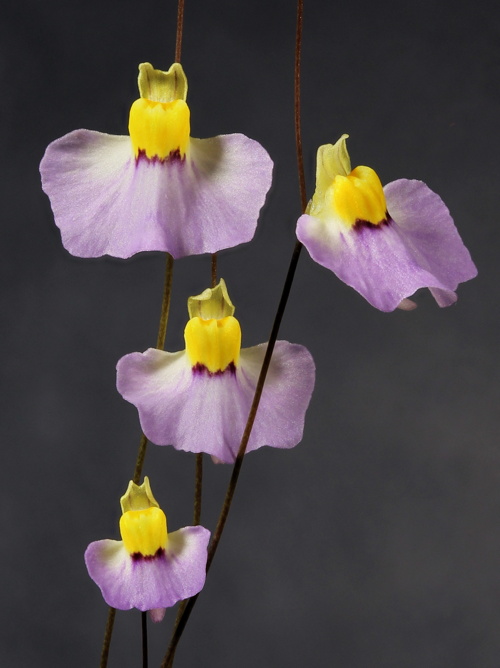
Utricularia bisquamata 'Betty's Bay'. This variety does not self-pollinate but will invade adjacent pots via its underground stems.
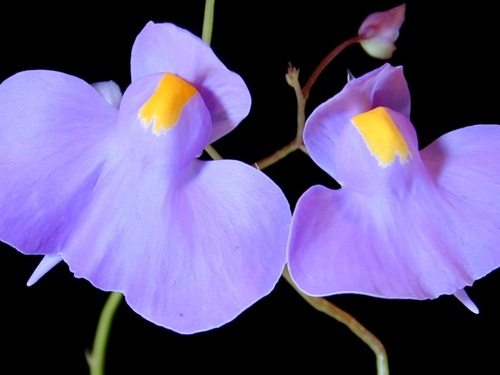
When your Utricularia longifolia are blooming, invite over your orchid friends and convert them to savage people. (Utricularia longifolia is nominally terrestrial. It can be grown as an epiphyte and as a semi-aquatic.)
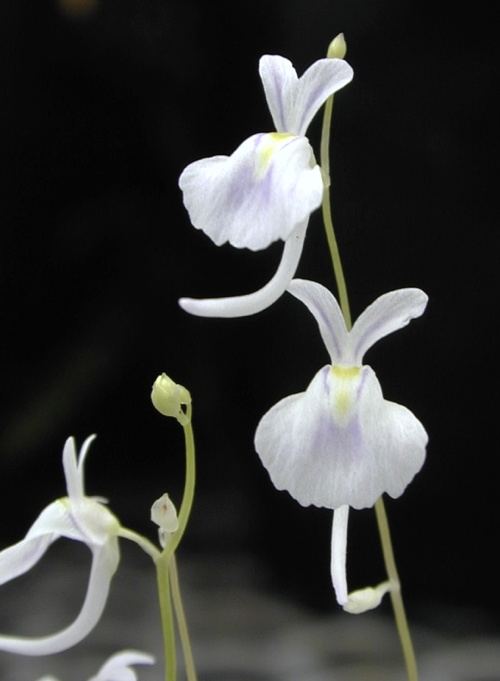
Utricularia sandersonii flowers.
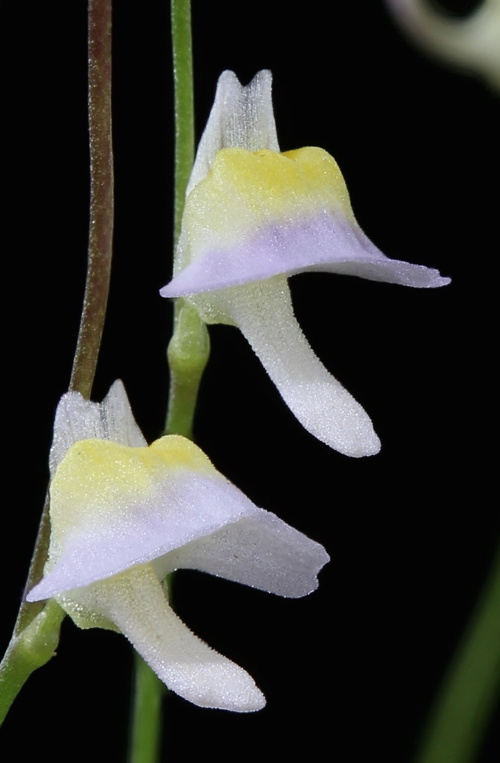
These are the flowers of the most common and very weedy variety ofUtricularia bisquamata. Its flowers do self-pollinate. It is very difficult to eliminate from a large collection of CPs.
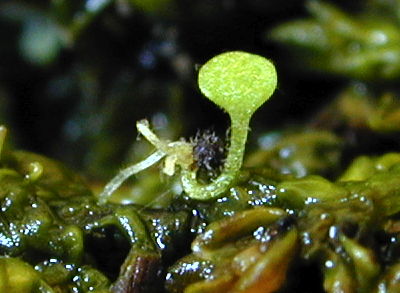
Utricularia nephrophylla sprout. Notice there are no cotyledon leaves or true roots. The same plant is shown below.
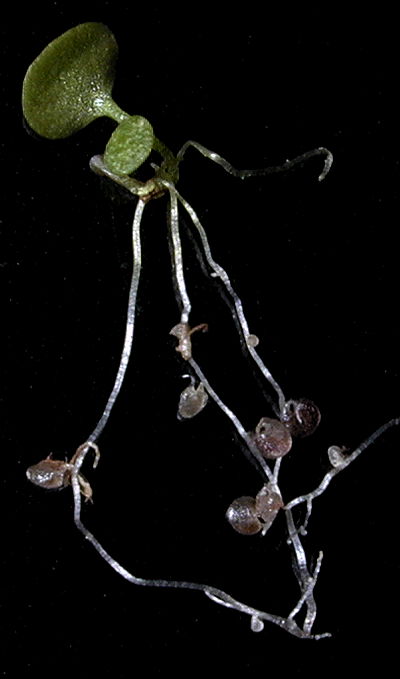
Utricularia nephrophylla seedling showing underground stems with suction traps constructed from leaves. Utricularia has no roots. The green structures are expanded stems. (Utricularia nephrophylla is considered a lithophyte but can be grown as a terrestrial and well as an epiphytic.)
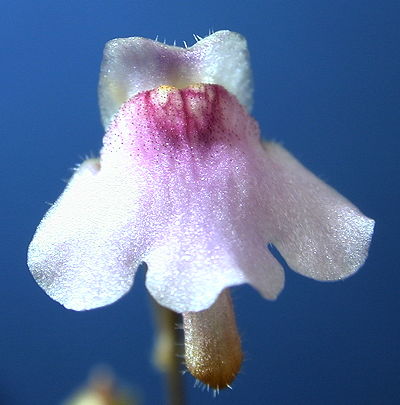
Genlisea hispidula flower.
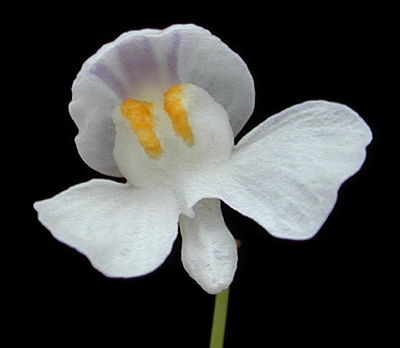
Utricularia nephrophylla flower.
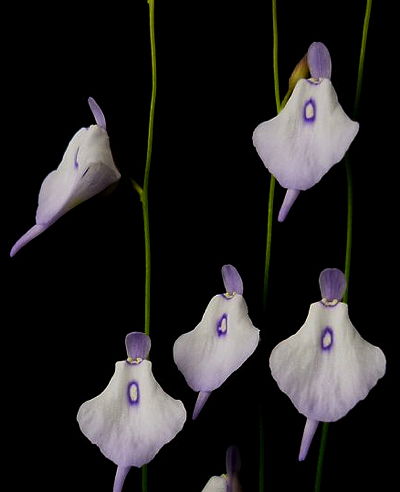
Utricularia pubescens flowers. Photo by RL7836.
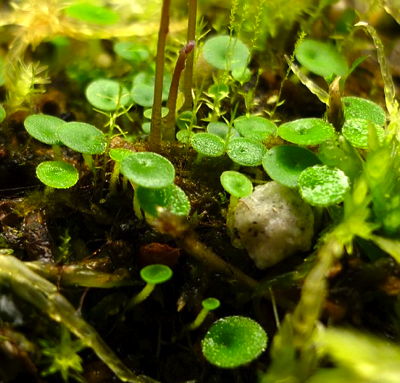
Utricularia pubescens photosynthetic organs. Photo by RL7836.
